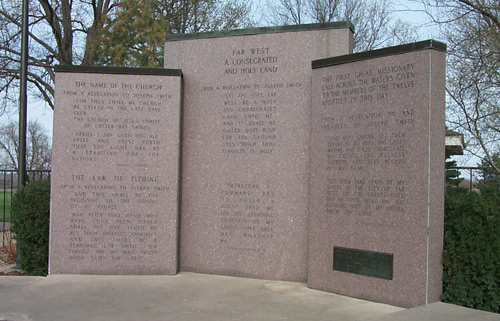|
Caldwell County, Missouri
Caldwell County is a county located in Missouri, United States. As of the 2020 census, the county's population was 9,424. It is part of the Kansas City metropolitan area. Its county seat is Kingston. The county was organized December 29, 1836 and named by Alexander Doniphan to honor John Caldwell, who participated in George Rogers Clark's Native American Campaign of 1786 and was the second Lieutenant Governor of Kentucky. Caldwell County was originally established as a haven for Mormons, who had been driven from Jackson County in November 1833 and had been refugees in adjacent Clay County since. The county was one of the principal settings of the 1838 Missouri Mormon War, which led to the expulsion of all Latter Day Saints from Missouri, following the issuance of an " extermination order" by then–Governor Lilburn Boggs. History Mormon settlement Caldwell County was originally part of Ray County. The first white settler was Jesse Mann Sr., who settled one-half mile nort ... [...More Info...] [...Related Items...] OR: [Wikipedia] [Google] [Baidu] |
Missouri Executive Order 44
Missouri Executive Order 44, commonly known as the Mormon Extermination Order, was an executive order issued on October 27, 1838, by the then Governor of Missouri, Lilburn Boggs. The order was issued in the aftermath of the Battle of Crooked River, a clash between Mormons and a unit of the Missouri State Militia in northern Ray County, Missouri, during the 1838 Mormon War. Claiming that the Mormons had committed open and avowed defiance of the law and had made war upon the people of Missouri, Governor Boggs directed that "the Mormons must be treated as enemies, and must be exterminated or driven from the State if necessary for the public peace—their outrages are beyond all description". The Militia and other state authorities—General John B. Clark, among them—used the executive order to violently expel the Mormons from their lands in the state following their capitulation, which in turn led to their forced migration to Nauvoo, Illinois. The order was supported by most no ... [...More Info...] [...Related Items...] OR: [Wikipedia] [Google] [Baidu] |

